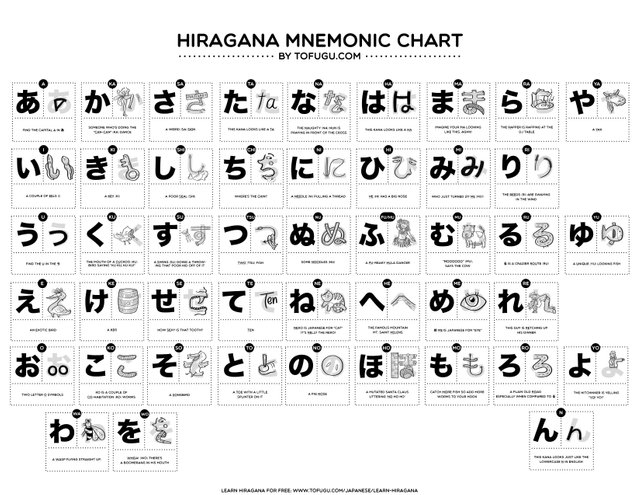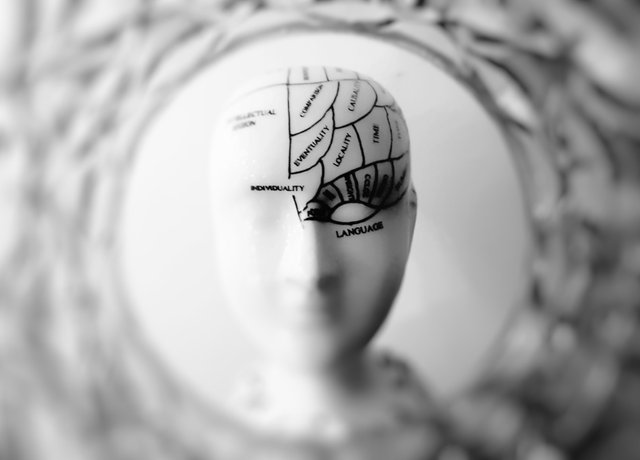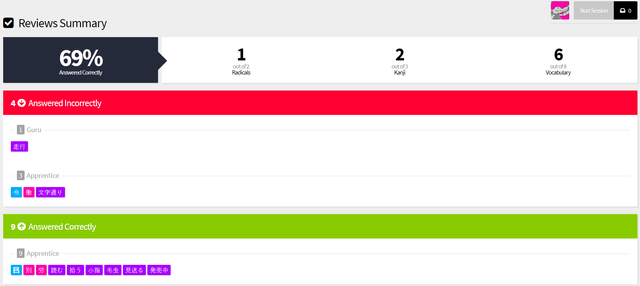How to get better at learning new languages with Spaced Repetition and the right tools
In this post, I hope to share some interesting information about the marvelous machine that is our brain, how we can make it grow (yes!) and how it can be hacked to store and recall information more effectively using Spaced Repetition. I will also show how it translates into improving learning of languages, Japanese being just my own path (to greatness and beyond! Wow, already getting too excited). Whether you are fluent in one language or more, study show that anyone can do it.
Finally, I will show how software with properly implemented SR and flashcard systems can even more smooth the learning curve.
Can we be/become good at learning new languages?
The short answer is yes; a longer answer would be that the harder and the more languages you study the better you brain gets at it.
The brain is a muscle
Seems kind of evident when you think about it, but our brain is an extremely powerful and flexible machine/muscle.
As a muscle, it needs to be titillated, entertained, and it also needs rest of course. A professional athlete needs to vary his activities in order to train different muscles. Same goes for the brain.
As one of my mathematics teacher was telling us non-stop in college: the brain is like a sponge, even more so when it still is in its infancy.
“…if we compare our ability as adults to that of the child, it would require us sixty years of hard work to achieve what a child has achieved in these first three years.” ~Maria Montessori, “The Absorbent Mind”
Indeed, a great many studies have shown that there seems to be no drawback in starting with multiple languages as soon as possible. However, I don't think I am writing this for 3 to 6-year old kids.
But if you're 20+, 30+, or 40+ don't despair! (if you're going to school or college, stay tuned too, but finish your homework first!)
Never too late
Personally, although I am fluent in three languages (French, English, Polish) I don't consider myself being particularly talented or "smart" with languages, or at least it does not feel that way.
However, I can at least admit a certain level of comfort, or at least an absence of discomfort when faced with a communication form I know nothing about. Come to think of it, maybe learning various programming languages and various forms of it (functional, object-oriented) also participates in slightly improving these skills. But I digress...
There's always time to get your brain back in shape. Indeed, researchers have noted that learning a foreign language has a visible effect on the brain. In a Swedish MRI study, researchers noted that:
Students with greater growth in the hippocampus and areas of the cerebral cortex related to language learning (superior temporal gyrus) had better language skills than the other students. In students who had to put more effort into their learning, greater growth was seen in an area of the motor region of the cerebral cortex (middle frontal gyrus). The areas of the brain in which the changes take place are thus linked to how easy one finds it to learn a language and development varies according to performance.
It's king of reassuring reading this, right? Because although some people are blessed with an extraordinary brain and can learn Icelandic in a week, 99% of us are just by-default lazy normal people, myself included :-) But we can still achieve greatness, or at least, let's not go overboard, learn a little bit of something new everyday.
See, what makes me incredibly happy for a few seconds is this "aha!" moment when I recognize, while reading a small sentence in Japanese, one Kanji in particular and that I can manage to get sense of its general meaning. Feels very satisfying indeed as I can practically hear the eerie pleasing sound of "achievement unlocked!" playing in my brain.
The difficulties in attempting to learn Japanese
So, back to Japanese. Now, I can assure you that I felt overwhelmed and still feels that way most of the time by the road ahead. To overcome this sense of "it's impossible, give up!" feeling creeping into the brain, it's important to focus on small tasks. Fortunately, handy tools and software are there to help us overcome these feelings. But first, what is so difficult about Japanese?
5th category of learning difficulty
Japanese is in good company with a few other languages such as Arabic, Cantonese or Korean in the 5th and last difficulty learning category for English-fluent people (or, I guessed, any of the first level language such as French, Spanish, or Portuguese which would make sense). It is estimated to take more than 2200 hours to be fluent. And even then, what does it mean? It is said there are more than 50000 Chinese characters, however a lot of them are obscure, or/and not even in use anymore. A Japanese schoolchild knows about 1000 Kanji learnt at elementary school, Shōgakkō (小学校), whereas you are considered a good reader if you know 2136 of the most common, the Jōyō Kanji (常用漢字), and at 6000 you are an expert.
This comes in the addition to the syllabic scripts, Hiragana and Katakana, which both contain 48 characters each, and that have to be mastered as well. Finally, Japanese and its grammar are heavily based on politeness. One has to learn the particularities of each level of politeness, and when, how and with whom to use which one. As a foreigner, you will be given a bit of leeway, but as a sign of respect, it is recommended to learn these.
Finding the level of proficiency to achieve
What you personally want to achieve is up to you; here are my own goals, ordered from (what seems to me is) hard to harder:
- succeed in passing the N5 and N4 exams which are destined to measure the level of understanding of basic Japanese for foreign people
- being able to read/decipher basic newspaper articles
- being able to understand and sustain a normal conversation
Setting far-reaching goals is equally as important as splitting seemingly daunting tasks into smaller parts. Also, learning how to write versus how to read will play a significant part in determining your learning process. As you can see from my own list, writing is totally absent from my short and middle-term goals. For me, it will come indirectly, as you will inevitably have to write short sentences, or complete sentences during exams. I don't plan however, for now, to become an expert in Japanese writing.
Where to start?

tofugu.com is an excellent resource for your Japanese language and culture learning experience.
Apart from a big load of Kanji, you will also need at one point or another to learn the two syllabic scripts. All Kanji can be written with Hiragana since it is a phonetic lettering system. In fact, it is considered a good thing to avoid learning the reading of Kanji using romanji, that is using the third alphabet, the latin-one we know. No one uses it in Japanese and the only time you'll encounter then is in subway stations in big cities for example (very helpful though!)
Plenty of online resources start their first lesson by bringing up the syllabic tables and expect you to cram them into your brain; some go as far as expecting you to know how to write them too. Which has to be done, don't get me wrong, but not necessarily at first.
Yes, you can start with Hiragana, and brute-force through it. It may work if you have an iron will and are dedicated, but I found that it was not doing it for me. I suspect that the main reason was the lack of sense of achievement. It seems that, maybe as a gamer, my brain has been trained to like receiving immediate candy/feedback. Yes, I could recognize some of these shapes and know how to pronounce them fairly quickly, but in the end I had learnt zero vocabulary. I was losing the will and shapes were blurring back to vaguely recognizable things.
I tried different tools and ended having a much better experience with Wanikani. I will come up with some more material on why I think the experience is so good (hint: a combination of cleverly implemented sub-systems to make you feel comfortable), but the thing that clicked for me was learning Kanjis reading and meaning immediately, and having their pronunciation written in Hiragana.
What? Yes, it seems strange, as there was no way to see the pronunciation written in romanji. However, for each kanji, an oral rendition was also provided! So I was learning the pronunciation and the meaning right away, and the Hiragana indirectly as the brain gets accustomed to seeing these funny looking curves and shapes. It also helps that immediately after learning new Kanjis (say 5, the default size of a lesson on wanikani), you get to pass a mini-quizz requiring you to provide the right meaning and reading. You write what you think is the right reading using latin phonetics and characters are automatically converted to Hiragana. Tada!
After only a few weeks, I was naturally able to read a kanji's expected pronunciation written in Hiragana. I cannot yet write them all but they have slowly nested into my brain and are consolidated after each encounter. I can recognize them all without failing now.
This gradual learning process I briefly mentioned comes with Wanikani having implemented Spaced Repetition at the core of the learning process.
Hacking your brain with Spaced Repetition
In short, spaced repetition is a way to hack your brain, in revisiting information regularly to effectively make it store and recall it for a long period of time. I am not fond of the word "hack" being used everywhere because it seems to be a "cool" word, but in this case, this is exactly what is going on. Borrowing James Gupta words found in a 2016 article:
[The brain] strengthens and consolidates memories of things it encounters regularly and frequently. So spaced repetition – revisiting information regularly at set intervals over time – makes a lot of sense.
Spaced repetition is simple, but highly effective because it deliberately hacks the way your brain works. It forces learning to be effortful, and like muscles, the brain responds to that stimulus by strengthening the connections between nerve cells. By spacing the intervals out, you’re further exercising these connections each time. It produces long-term, durable retention of knowledge, and in my experience, once people start using it, they swear by it.
Cool, right?
Do you think this is a novel technique? No! According to wikipedia, it was first proposed as an improved learning tool in 1932. It went by largely unnoticed until the 70's when Sebastian Leitner devised his Leitner system, an all-purpose spaced repetition learning system based on flashcards .
What has changed over the last decades is the advent and general availability of computers and the fact that spaced repetition could be implemented in software, enabling automating scheduling and precise spacing between reviews. The harder the material is to learn, the more often it will appear, with the difficulty being reevaluated each time the user provides a correct/wrong answer.
Tools and software
Notable implementations of SR include Anki (available for free on practically any platform), Course Hero, Duolingo, Memrise and of course Wanikani, which I already mentioned.
While you can log in and use these tools online using any browser on your computer or mobile device, most of them are also apps available offline, and you have to consider the power of notifications. Nobody wants to be slammed by notifications all day, but if you can configure your tool to check every hour if a threshold of items to review has been reached, it becomes very handy.
Even if spaced repetition works, you still need to act upon it, log in and work on your reviews.
So, next time, instead of idly browsing your favorite social network feed during a small break (or in addition to it: we all have our guilty pleasures!), use these 5 or 6 minutes to work on your review queue. Again, spaced repetition works but it still needs a very minimal investment of time.
Wanikani and Spaced Repetition
In Wanikani, SR is implemented at three levels: radicals, Kanji and vocabulary, each one being instantly recognizable by a distinct color. I won't go too deep into radicals, let's just say they are parts of Kanji. It's like a ladder basically, learning radicals helps you remember Kanji, which then helps in remembering vocabulary.
Then, each item you study has to pass 4 gates before wanikani considers it has literally been burned into your brain (burned being the name of the last level in fact). Here is how it looks like:
During the reviews, providing a right answer increments a percentage whereas a wrong one decrements the percentage. When it reaches 100%, the item can pass through the gate (for example, from apprentice to guru level). And while an item can move from left to right (until it gets burned), it can also very easily go back to square one should you provide consecutive negative answers. This is all very transparent and after you've finished reviewing your items you get a summary of how things went.
Here's one of my latest ones (not my best, eh...):
You can see that among the ones I've answered correctly, none have been moved past the apprentice level which means that no threshold had been reached.
And that concludes our very little review of Wanikani and how spaced repetition is used to improve Kanji and vocabulary learning. There is a lot more to know: how lessons are done, how radicals are used as mnemonics to further help in improving learning, how gamification is brought into the mix, etc. A lot more to say, but I'll try to cover these in separate posts!
Sparked your interest?
I hope I managed to share my enthusiasm about language learning, spaced repetition and one of the interesting implementation of it that is Wanikani. Maybe ignite a spark for some of you? I did not touch a very important part of learning that has to be there in order to be effective and not tire in the long run: having fun. As a software developer, I am obviously biased, but I think well-done tools go a long way in allowing you to have just that: fun.
Finally, while my own goal is to learn Japanese, spaced repetition can be used to learn basically anything: other languages of course, but very different topics. Just check out the list of shared anki decks and you'll see what I mean: music, geography, biology, etc.
Disclaimer
As I mentioned in my initial introduceyourself post, I am not affiliated at all to Tofugu or Wanikani or any newspaper or website I've linked to here. Or maybe I am in a way: Wanikani is free for the first 3 levels so anyone can try it for a few weeks but I paid a lifetime subscription, and I am now advertising it somehow, for free. Silly me! 😜





